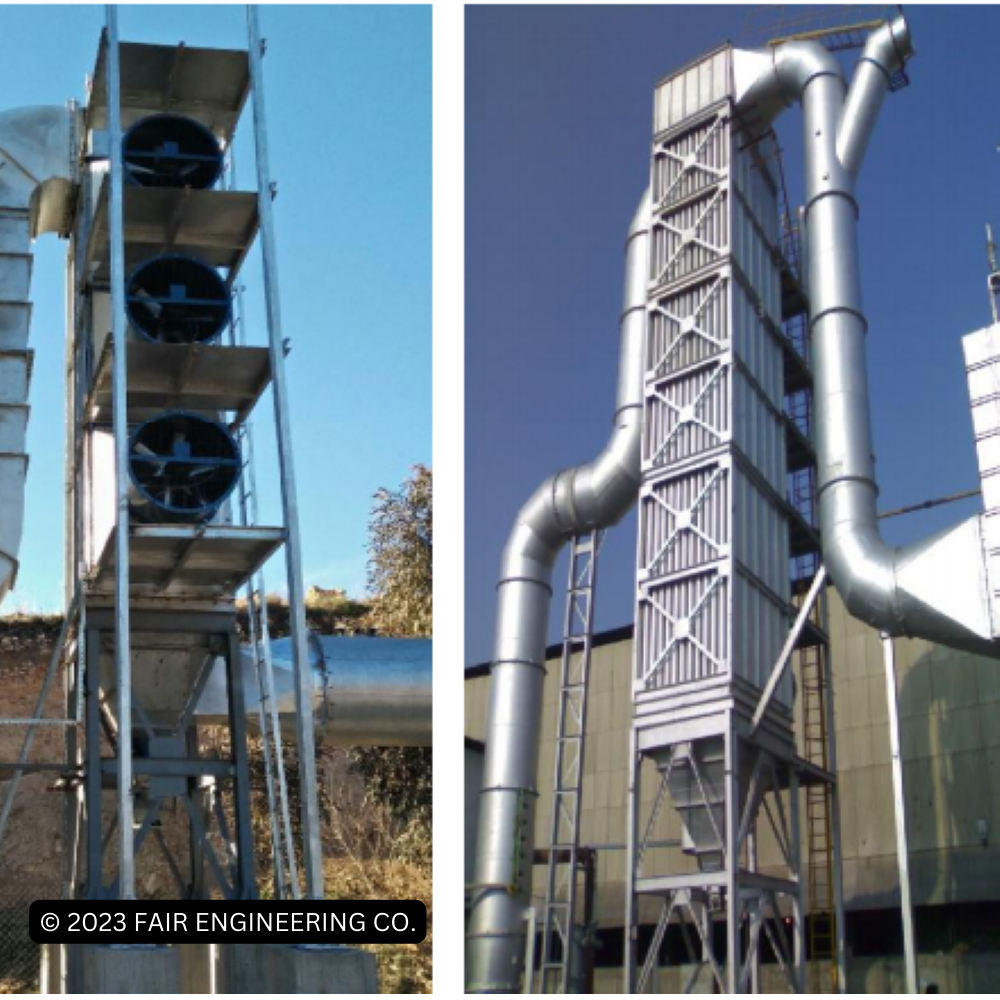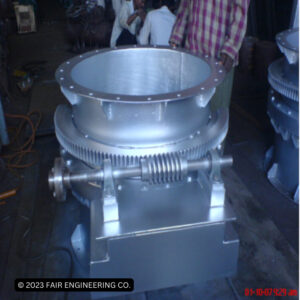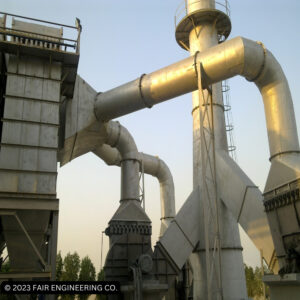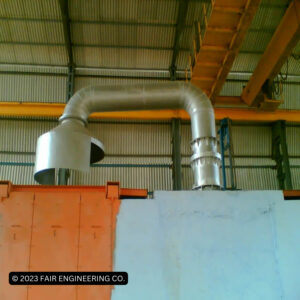Forced draft coolers (FDCs) are air-cooled heat exchangers used to reduce the temperature of fume generated in steel plant pollution control systems. FDCs are used to cool down hot fumes with coarse particles produced by steelmaking processes, such as smelting, sintering, and other high-temperature operations in Induction, AOD or EAF type furnaces.
Description
Forced draft coolers (FDCs) are air-cooled heat exchangers used to reduce the temperature of fume generated in steel plant pollution control systems. FDCs are used to cool down hot fumes with coarse particles produced by steelmaking processes, such as smelting, sintering, and other high-temperature operations in Induction, AOD or EAF type furnaces.
FDCs are often used in conjunction with other types of pollution control systems, such as baghouses and scrubbers. They can also be used in stand-alone applications to reduce the temperature of fumes and other noxious gases.
The primary benefit of using an FDC is that it can reduce the temperature of hot, polluted air by as much as 50-60 °C. Also, the coarse particles in fumes gets settled in the hopper and only fine dust is allowed to exhaust in the bag filter system. This can help the other pollution control equipment’s after FDC to operate more effectively by lowering the temperature of the air they need to filter. It can also reduce the energy costs associated with cooling the hot fumes.
FDCs are easy to install and maintain, and require only minimal space to operate. They are also more efficient compared to other cooling methods such as wet scrubbing, and can reduce the overall energy costs of a steel plant’s pollution control system.
Overall, using an FDC can be a cost-effective way to reduce the temperature of hot, polluted air in steel plant pollution control systems. It can help to improve the efficiency of other pollution control systems, and can reduce energy costs associated with cooling the air.






